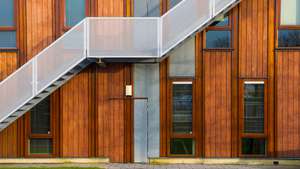
Monitoring algorithm of mycodestruction of historical and architectural wooden structures.
 Alona Perebynos 1*,
Alona Perebynos 1*,
1 Kyiv National University of Construction and Architecture.
Received: 08/05/2017, Accepted: 08/25/2017, Available online: 09/30/2017.
DOI: https://doi.org/10.32557/useful-1-1-2017-0004
HDL: http://hdl.handle.net/20.500.12334/28
*Corresponding author: e-mail: alenaperebinos@gmail.com, address: Povitroflotsky Avenue, 31, Kyiv, 03680 Ukraine
Under a creative commons license. Volume 1, Issue 1, 2017, pages: 34-42.
Author Keywords: environmental monitoring; historical and architectural structures; biological damages; mycological destruction.
Abstract. Wooden historical and architectural constructions are particularly vulnerable to the aging process and the degradation under the influence of environmental factors, due to the relative fragility of the material. Mycological damage is one of the most common and dangerous factors causing the destruction of wooden structures. In this regard, in this article, introduction of mycodamage monitoring of wood architectural monuments, as part of an integrated system of supervision for the historical values, is proposed. Detailed monitoring algorithm for the early detection of biological damage and assess its destructive action is developed by adapting the principles of environmental monitoring to the problem of mycodestruction of building structures. A primary schema of integrated evaluation system of damages as a result of the analysis of existing regulations in the area of restoration of monuments of cultural heritage is represented.
- Introduction
The peculiarity of historic-architectural wooden buildings is undoubted that they are built from a relatively short-lived material, which is subject to aging processes, destructions under the influence of environmental factors and biological destruction (damage to fungi, insects, algae and other biological agents). Mycological (fungi) damage sharply reduces the structural properties of wood, causing a great danger for the preservation of wooden structures and products [1]. Very often, monuments are subject to severe contamination, where ongoing restoration or renovation work is carried out using modern building materials [2]. Therefore, monitoring of these objects should become the foreseeable and long-term means of preventing the development of biological damage as the primary factor that reduces the useful life of structures.
In the countries of the European Union such as Germany, Belgium, the Netherlands, Great Britain, Hungary and other organized charities, specialized in long-term care and adequate maintenance of cultural heritage buildings. They operate under the slogan "prevention is better than cure," that is through the regular inspection of buildings and the immediate execution of urgent minor reconstruction, an effective level of preservation of architectural heritage is achieved [3]. This activity meets the needs of individual monuments, which is an integral part of the city's architectural landscape. However, for architectural constructions located in the museum exits, for example, in the National Museum of Folk Architecture and Life of Ukraine "Pirogov," the regular monitoring of the state of buildings should be carried out at the management level of the museum and state authorities responsible for preserving the country's cultural heritage.
In the normative document [4] the following complex of scientific and restoration researchers was recorded:
- historical, archival and bibliographic;
- architectural and archaeological;
- architectural;
- engineering (scheduled and extraordinary);
- scientific and technological.
However, some of them are of a one-time nature; others are carried out when necessary and appointed with "the frequency established in the departmental rules for the restoration and operation of monuments." In turn, monitoring is a dynamic and ongoing process aimed at the formation of a useful information base and its use in the restoration, conservation, and repair of architectural monuments. This process can be divided into the following stages: periodic - conducting technical surveys with a predominantly visual method of assessing the state of structures, carried out once a few years; operational - observing the state of the constructions of the building with the use of instrumental registration methods, the frequency of which decreases and tends to continuous observation [5]. Therefore, it is more rational to carry out adequate monitoring on the territory of Skansen (museums of the open air), which can provide a detailed information base on the state of the monument. This monitoring should consist of both engineering and scientific and technological survey, that is to create a sophisticated system for the preservation of architectural exhibits.
Development of a detailed algorithm for monitoring of mycological damage to historic wooden buildings. Analysis of the experience of the monitoring system in other countries. Adaptation of the existing ecological monitoring system for historical and architectural buildings. Development of recommendations for the implementation of the monitoring system in the activities of museums in the open air.
- Presentation of the main material of the study
Fungi is a separate group of organisms, which, due to physiological and biological and environmental properties, extend over considerable distances and populate various substrates of anthropogenic origin (industrial products, building materials, household appliances, etc.) [6-7]. Museum exhibits such as historical and architectural buildings have not become an exception. The first results of the study of the mycological destruction of wood at the National Museum of Folk Architecture and Life of Ukraine showed that, despite the careful supervision of the monuments by the museum workers, almost all the buildings are affected by fungi. Therefore, it is proposed to introduce a comprehensive monitoring system, which will include a regular review of structures not only for mechanical damage but also for the presence of biological agents (eco-monitoring) aimed at detecting mycological (fungi), entomological (insect), allergic (seaweed) and other damages.
The myco-monitoring of historical monuments should consist of specific stages: observation, analysis, evaluation, and comparison of the results with the previous ones (Fig. 1). The first stage of "observation" consists of visual inspection of probable areas of damage by biological agents. The required elements of the investigation of the building include:
- places of joints of logs, log houses and boards;
- knots and cracks in wooden parts of structures;
- places without natural light and ventilation;
- attic room; places near the surface of the soil;
- under the roof, etc.
Periodic inspection of places of probable damage and timely detection of cells for the development of mushroom mycelium on wood is necessary for the preservation of monuments, adoption of adequate measures and reduction of material costs [2]. The result of this stage is the preparation of a passport on the condition of the building and, if necessary, the determination of sites for sampling.
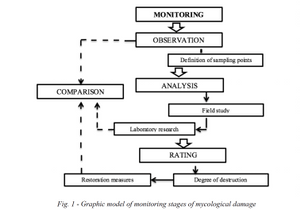
After determining the sampling points, the second stage of the "analysis," which consists of two stages: field (sampling) and laboratory (determining the type of fungi), begins. When collecting and photographing the fetal bodies of the basidial fungi, it is important to note the signs, dimensions, color, smell, consistency, the presence of scales, hairs, changes in the color of the individual parts of the fetal body when pressed, cut, etc. [2].
Stages of this stage are as follows:
- Sampling (using a dry needle method, using a tampon or microbiological seal, or removing a fragment of the damaged material).
- Placement of selected samples in a sealed chamber with an increased relative humidity of the air.
- Sowing to standard nutritional media (synthetic Chapek and Chapek-Doks, Semi-synthetic Saburo, etc.).
- Obtaining pure cultures and digestion in a common environment for identification.
- Identification [6].
Modern diagnostics of cells and causes of biosecurity, as well as identification of the most dangerous wood-decaying and wood-colored fungi, are a necessary link in the system of preventive conservation and preservation of museum objects [8].
The third stage of the "assessment" consists of two parts and is inextricably linked to the previous one. First, according to the results of the analysis of the samples, a characteristic is given and the degree of damage to the wood is established:
- there is a partial defeat of the fungi;
- mechanical strength not lost / partially lost / significantly lost;
- signs of wood-destroying beetles are not detected;
- The pest is detected and to what degree of danger it belongs (weak or strong destroyer) [9].
Secondly, depending on the degree of damage, it is decided which measures should be taken to restore the structure (conservation, partial restoration or complete repair), based on the targeted selection of biocidal preparations.
All data and results of each monitoring should be entered in the database for the implementation of the last stage of "comparison," the tasks of which are to detect a particular regularity between the previous monitoring results and finding the causes of the damage.
The system of eco-monitoring of a monument should include modern diagnostic research in its structure. For example, the creation of registration databases will increase the reliability of the assessment of the causes of damage, provide restorers and management bodies with scientifically sound information for planning a set of measures for preventing damage and preservation of architectural monuments. It will also be possible to accurately substantiate measures for the care of monuments and the introduction of innovative technologies into the practice of restoration work [10].
An integrated system for preservation of architectural exhibits of operational monitoring consists of two parts, which are responsible for the following tasks:
- Engineering examination:
- conducting of static and dynamic calculations of structures;
- a review of the nature of all constructions and the determination of the state of building materials, conducting laboratory investigations;
- determination of the carrying capacity of structures or the degree of an accident with the fixation of all deformations;
- the state of foundations;
- a condition of the roof;
- state of masonry, metal and wooden constructions, floors, external and internal fittings, architectural and artistic design;
- the presence of insulating coatings;
- obtaining data on the state of hidden constructions and their foundations;
- determination of a technical condition of a facade and interior decoration.
- Scientific and technological research:
- definition of the general state of the monument;
- definition of the nature, composition, and condition of building materials on this monument, modeling their behavior in the prevailing conditions;
- determination of the humidity of the elements and structures and the nature of the suffocation;
- study of the state of the environment of the monument (temperature, humidity, air exchange, chemical composition of the air, etc.);
- identification of sources and mechanisms of possible impacts on the monument and its elements;
- determination of conservation and restoration tasks;
- determination of the priority of the implementation of restoration works on the monument;
- development of recommendations for the work [4].
Thus, timely detection using eco-monitoring of the centers of the development of any biological damage to the wood is necessary for the preservation of monuments of historical and architectural heritage, adoption of adequate measures and reduction of material costs.
Conclusion
The complex monitoring system has been introduced in many countries of the world as an effective preventive method to prevent the irreversible process of destroying historical monuments.
Principles of environmental monitoring (observation, assessment, analysis, comparison) are successfully adapted for use in the process of the survey of buildings for biological damage, including mycological.
Implementation of the monitoring system in the work of Scansen will promote the implementation of adequate measures to preserve the monuments of historical and architectural heritage and reduce the material costs.
Further development of the methodology of environmental assessment of the operating environment of the monument and the system for recording the results of monitoring research, collection, systematization, and storage of the information received for its analytical processing is needed.
References
[1] Ilichev, V.D., Bocharov, B.V., & Gorlenko, M.V., (1985). “Ecological bases of protection against biological damage.” V.E. Sokolova (Ed.). Moscow: Science, 264 [in Russian].
[2] Mitskevich, A.G. (2011). ”Mycological monitoring of wooden monuments.” A.G. Mitskevich, I.A. Goncharova, A.N. Kapich. Ecological Bulletin, Issue 3 (17), P. 14–21. [in Russian].
[3] Fowler, A. (2010). “Sustainable conservation – the „Monument Watch“ (MW) approach and its benefit for the better preservation of historic buildings especially wooden architecture.” Culture of the Wood – Wood in Culture: Abstracts of Reports of the International Conference, 24 − 28 September, 2010, Moscow – Rostov the Great. Moscow. (pp. 58–59). Moscow, Russia.
[4] “Reconstructsiia, remont, restavratsiia obiektiv nevyrobnychoi sfery. Restavratsiini, konservatsiini ta remontni roboty na pamiatkakh kulturnoi spadshchyny [Reconstruction, repair, restoration of objects of non-production sphere. Restoration, conservation and repair works on the monuments of cultural heritage].” (2005). DBN V.3.2-1-2004. Kyiv: Derzhbud Ukraine [in Ukrainian].
[5] Pyatnitskaya, Т. A. (2011). “Real-time monitoring of architecture monuments.” Bulletin MGSU, Issue 8, P. 28–32.
[6] Koval, E.Z., & Mytkivska, T. I., (2011). “Mycological investigation of museum artifacts.” Kyiv, Ukraine. [in Ukrainian].
[7] Antoniak, G.L., Kalynets-Mamchur, Z.I., Dudka, I.A., Babich, N.O., & Panas, N.E., (2013). “Ecology of fungi.” Lviv: Ivan Franko National University of Lviv, 628 [in Ukrainian].
[8] Mitskevich, A.G. (2013). “Monitoring of biodamages as a method of preservation of historical and cultural heritage. Proceedings of the XIX International Cyrill and Methodius readings dedicated to the Days of Slavic Written Language and Culture.” (pp. 157-161). Minsk: Belarusian State University of Culture and Arts [in Russian].
[9] “Systema zabezpechennia nadiinosti ta bezpeky budivelnykh obiektiv. Obstezhennia i pasportyzatsiia tekhnichnoho stanu budivel ta inzhenernykh sporud (proekt, druha redaktsiia) [System reliability and safety of construction projects. Inspection and certification of technical condition of buildings and engineering structures (draft, second edition)].” (2012). DSTU B V.1.2- №: 201Х. Kyiv: Minregion Ukraine [in Ukrainian].
[10] Knyazeva, V.P. (2005). “Ecology. Restoration Basics: Textbook for High Schools.” Moscow: Architecture, 399 [in Russian].
Please cite as: A. Perebynos “Monitoring algorithm of mycodestruction of historical and architectural wooden structures.” USEFUL online journal, vol. 1, no. 1, pp. 34–42, September 2017. DOI: https://doi.org/10.32557/useful-1-1-2017-0004

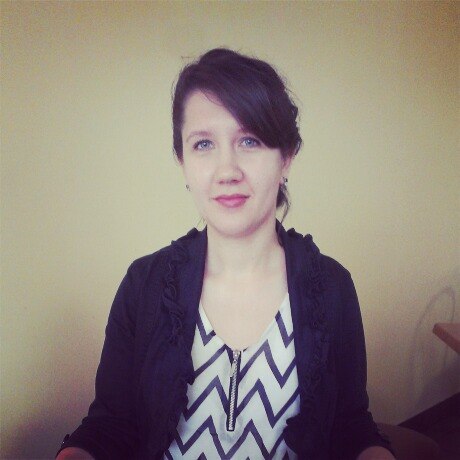

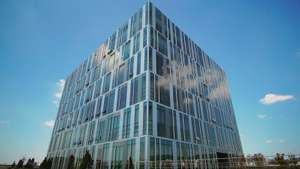
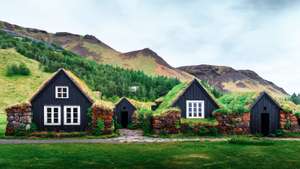



Comments